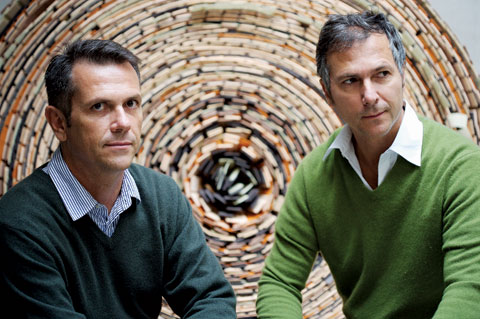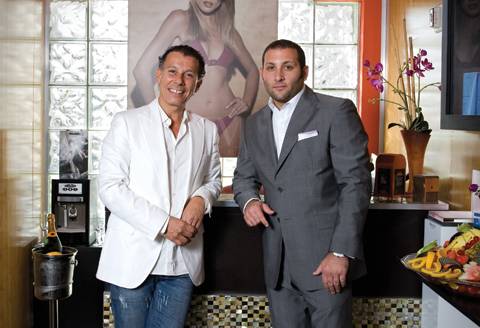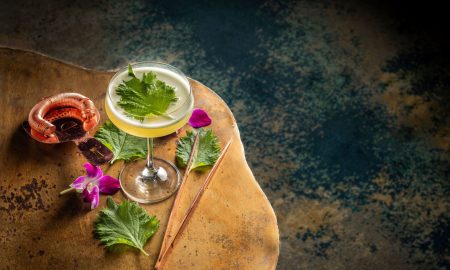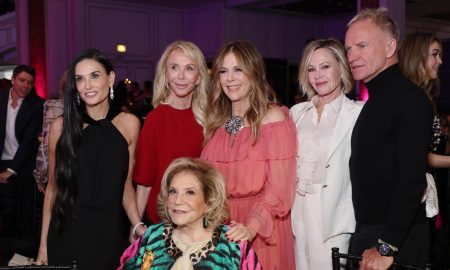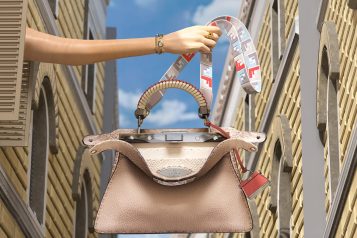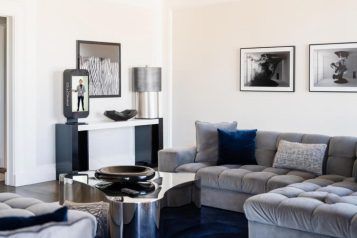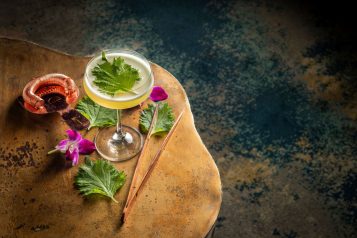Our mentors are everyone who thought ahead of their time, such as Ingo Maurer, Shiro Kuramata, Andrea Branzi, and Patrick Blanc. We admire them for not settling for worn-out shapes and techniques.
Design Miami/, a prestigious fair that runs congruent to Art Basel and Art Basel Miami Beach, has selected brothers Humberto and Fernando Campana as Designers of the Year for the 2008 Miami show. In receiving this prestigious honor, the Campanas join the likes of Zaha Hadid, Marc Newson, and Tokujin Yoshioka. The Brazilian duo will create an installation designed exclusively for the December show, which runs from December 3 through 6. The new pieces will be presented within the central courtyard of the fair’s structure in the Design District.
Haute Living: You’ve been named Designer of the Year. What were your reactions when you heard the news?
Humberto Campana: We felt very honored for receiving the Designer of the Year award. For us, it means that it is our responsibility to make every project better than the last and that we should reinforce our concepts and create more significant and touching pieces.
HL: What new pieces will be unveiled at Design Miami/?
Fernando Campana: For this edition of Design Miami/, we have developed three pieces called Diamantina I, II, and III, which are sitting structures of woven wicker with amethysts crystals attached to it. The piece is named after the homonymic city in the inland of Brazil known for the large amount of gemstones.
HL: From where does each of you get your inspiration? How do you encourage one another?
HC: Inspiration comes from life itself. It comes from every living thing, from nature and the different counties and cultures we visit during our trips. We believe that the great friendship we have is what helps us to continue creating and encouraging one another to have the strength and will to continue developing new pieces.
HL: Describe your collaborative process; what is it like to try to meet one another’s expectations?
FC: Our creative process involves much discussion on the subject, but a positive one (without arguing with one another), for the maturity of the project. Once the concept is born we start working on it; many times it will be discarded, but if we think it has a future, we continue to work on it, so that it can end up becoming a prototype and eventually an actual piece. However, not everything we propose will be accepted by the other, so many times we pursue a concept and it doesn’t meet one or both of our expectations, and we start all over again.
HL: Please describe your style. From what point of view do your designs derive? Is there a consistent thread?
HC: Most of the time, our work is based on the materials we use, as the materials play a huge part in what the piece is going to become. Many times, our work represents a cultural portrait of the reality we find ourselves in: the everyday Brazilian reality.
HL: What kinds of emotional responses are you hoping for via your pieces?
FC: We hope to touch people, to help them to find their long-grown inner children. Take, for example Banquete, which is made out of stuffed animals.
HL: What types of new values are you aiming for through your creations?
HC: Everything produced by Estúdio is handcrafted. We also use some ancient dying techniques, provide jobs to communities in need, and are socially responsible by adding human values to our work. We strive to humanize design as a whole.
HL: Who are your mentors and how do they continue to stimulate you?
FC: Our mentors are everyone who thought ahead of their time, such as Ingo Maurer, Shiro Kuramata, Andrea Branzi, and Patrick Blanc. We admire them for not settling for worn-out shapes and techniques.
HL: Who would you like to design for? What would it be?
HC: We would like to build a garden for a community in need, but not just a garden, it should have more meaning to it. It should educate people about ecology, which would be helpful to some of the poorest populations in Brazil, who do not have access to environmental education. We would like to teach them to recycle and to build their own recycled garden.
HL: How has your work evolved? Where is it heading?
FC: It has evolved from sculptures in the beginning of our career to a very broad area of projects. We now create industrial pieces, and Estúdio has many numbered and limited edition pieces. We also do scenography, costumes and fashion accessories, and architecture projects.
We have also grown in terms of technique, knowledge, and development; we have adapted some traditional handcrafted works into industrial, never-before-made processes. This allows us to use less products that harm the environment and helps us develop more pieces with the help of communities in need, especially in Brazil.
HL: How do you see your work fitting into the global design landscape? Do you consider yourselves part of any particular movement?
HC: We do not like to be associated with any particular movement, quite the opposite. We do not like to be labeled.
HL: What do you feel is Art Basel Miami Beach and Design Miami/’s impact on the art world?
FC: It provides the possibility of developing a dialog about more emotional, unique pieces that many times play a very important part in a designer’s ability to develop new and better industrial processes and pieces.







